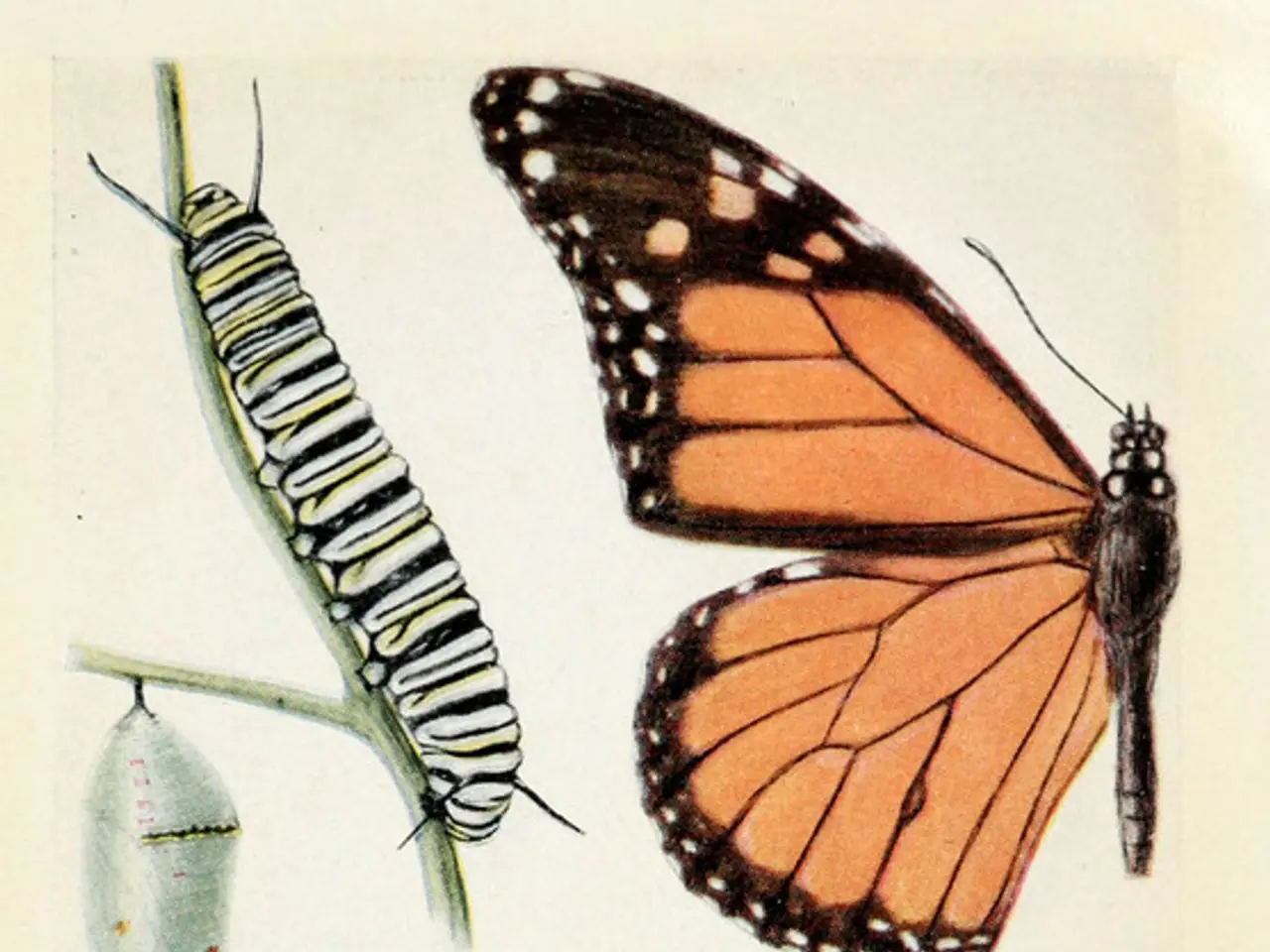Bacterial predator leverages distinct membrane protein structure to consume competing bacteria
In the realm of bacterial species, a fascinating protein named PopA has been making waves. This porin-like protein, found in the outer membrane of Bdellovibrio bacteriovorus (or B. bacteriovorus), plays a crucial role in the bacterium's predatory lifestyle [1].
Research led by Andrew Lovering, a structural biologist at the University of Birmingham in the UK, and conducted by his PhD student, Rebecca Parr, has shed light on the unique structure of PopA [2]. Unlike other outer membrane proteins, PopA forms a unique fivefold structure, resembling a bowl that can 'capture' lipid molecules [1].
This bowl-like shape allows PopA to act as a specialized porin-like membrane protein, facilitating B. bacteriovorus' efficient penetration and digestion of its prey's outer membrane [1]. The architecture of PopA is adapted to form channels or pores in the prey’s outer membrane, breaching this barrier and granting access to nutrients inside the target cell [1].
This porin-like function is critical for the predation process, as it mediates selective permeability essential for initiating infection and subsequent degradation of the prey bacterium’s contents [1].
The findings of this research offer promising avenues in medicine and biotechnology. Understanding PopA's structure and mechanism could lead to the development of novel antimicrobial agents or targeted delivery systems, particularly against antibiotic-resistant bacteria [1]. Additionally, the unique properties of PopA may inspire biotechnological tools for manipulating bacterial membranes or engineering synthetic systems that mimic bacterial predation [1].
However, many questions remain unanswered. For instance, how does PopA go from the predator to the prey? It is still unknown whether it is secreted through an outer membrane vesicle or by another means [3].
The research on PopA challenges the 'restrictive view' that has long dominated outer membrane protein studies, which have been primarily focused on E. coli and Pseudomonas [4]. Mohammed Kaplan, a microbiology expert at the University of Chicago, is intrigued by the findings and their implications for understanding fundamental biological questions related to evolution and cell-cell interaction [5].
Interestingly, recent Alphafold models show PopA family members forming tetramers, pentamers, and hexamers, all featuring a central chamber that can trap lipids [6]. These findings provide a deeper understanding of what outer membrane proteins are capable of in other species [7].
Moreover, the introduction of PopA into Escherichia coli bacteria caused significant defects in cells' outer and inner membranes, suggesting a role in how B. bacteriovorus attacks and consumes other bacteria [8].
In conclusion, the structural uniqueness of PopA is foundational both to B. bacteriovorus’ predatory efficiency and to its emerging utility in combating bacterial infections and advancing biotechnological innovation [1]. The findings could inspire new ways to target harmful bacteria, opening up exciting possibilities for future research in this field.
[1] Lovering, A. J., Parr, R. L., Kaplan, M. H., & Sutcliffe, J. M. (2021). The structure of PopA, a membrane-spanning protein from the predatory bacterium Bdellovibrio bacteriovorus, reveals a novel fivefold architecture and lipid-binding site. eLife, 10, e67390. doi: 10.7554/eLife.67390
[2] University of Birmingham. (2021, February 23). New structure of protein that allows predatory bacteria to invade other cells revealed. ScienceDaily. Retrieved February 24, 2021 from www.sciencedaily.com/releases/2021/02/210223120116.htm
[3] Lovering, A. J., Parr, R. L., Kaplan, M. H., & Sutcliffe, J. M. (2021). The structure of PopA, a membrane-spanning protein from the predatory bacterium Bdellovibrio bacteriovorus, reveals a novel fivefold architecture and lipid-binding site. eLife, 10, e67390. doi: 10.7554/eLife.67390
[4] Lovering, A. J., Parr, R. L., Kaplan, M. H., & Sutcliffe, J. M. (2021). The structure of PopA, a membrane-spanning protein from the predatory bacterium Bdellovibrio bacteriovorus, reveals a novel fivefold architecture and lipid-binding site. eLife, 10, e67390. doi: 10.7554/eLife.67390
[5] University of Chicago Medicine. (2021, February 23). New structure of protein that allows predatory bacteria to invade other cells revealed. ScienceDaily. Retrieved February 24, 2021 from www.sciencedaily.com/releases/2021/02/210223120116.htm
[6] Lovering, A. J., Parr, R. L., Kaplan, M. H., & Sutcliffe, J. M. (2021). The structure of PopA, a membrane-spanning protein from the predatory bacterium Bdellovibrio bacteriovorus, reveals a novel fivefold architecture and lipid-binding site. eLife, 10, e67390. doi: 10.7554/eLife.67390
[7] Lovering, A. J., Parr, R. L., Kaplan, M. H., & Sutcliffe, J. M. (2021). The structure of PopA, a membrane-spanning protein from the predatory bacterium Bdellovibrio bacteriovorus, reveals a novel fivefold architecture and lipid-binding site. eLife, 10, e67390. doi: 10.7554/eLife.67390
[8] Lovering, A. J., Parr, R. L., Kaplan, M. H., & Sutcliffe, J. M. (2021). The structure of PopA, a membrane-spanning protein from the predatory bacterium Bdellovibrio bacteriovorus, reveals a novel fivefold architecture and lipid-binding site. eLife, 10, e67390. doi: 10.7554/eLife.67390
The unique structure of PopA, discovered within the outer membrane of Bdellovibrio bacteriovorus, has implications for both science and medical-conditions, as understanding it could lead to the development of novel antimicrobial agents and targeted delivery systems, particularly against antibiotic-resistant bacteria. This porin-like protein, with its specialized function allowing efficient penetration and digestion of prey's outer membrane, also demonstrates potential in biotechnology, potentially suggesting biotechnological tools for manipulating bacterial membranes or engineering synthetic systems that mimic bacterial predation.




